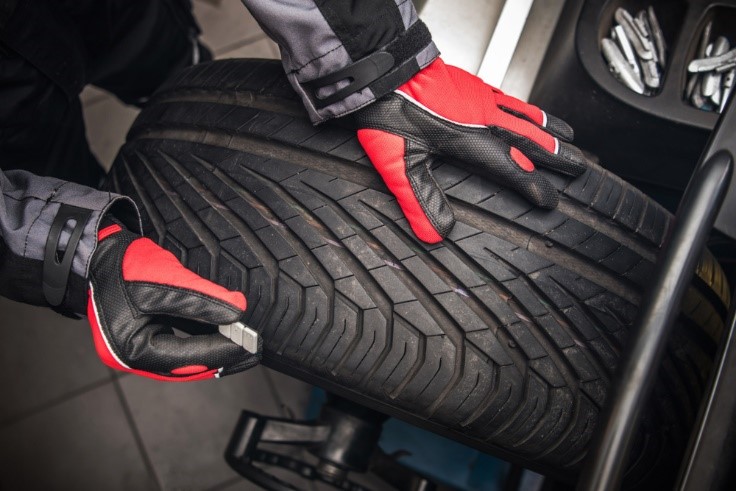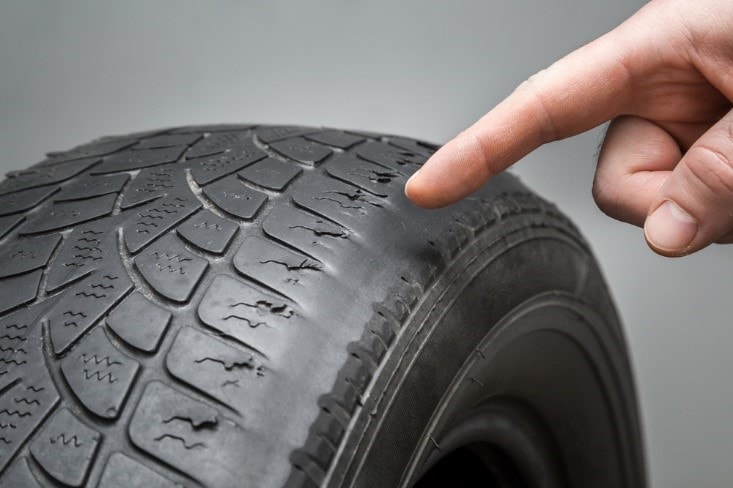
A recommended routine service, balancing tires is just as important as changing oil or getting a tire rotation. A proper tire balance will ensure better tread wear, prevent “pulling” to one side, and reduce the likelihood of requiring a wheel alignment before the recommended interval. In essence, keeping your tires in balance will improve ride quality and overall performance.
But what is tire balance service, anyway? And is it dangerous to drive if your wheels aren’t balanced properly? Here’s everything you need to know about one of the most overlooked car maintenance tasks.
The Tire Balancing Process
If you weren’t aware, even luxury car tires have little weights, which are attached to their rims, that vary in…well, weight. When you drive, those weights can sometimes become dislodged and fall out of place -- this occurs more frequently if you hit a curb or potholes regularly -- though wheels can also go out of balance due to bent rims or uneven tread wear.
Although a tire balance is usually performed alongside a tire rotation or wheel alignment, fixing unbalanced tires is a separate service. When you visit a mechanic or auto service center near you for routine maintenance, the technicians will remove your tires – this must be done for a tire rotation – then place them on a balancer to identify if any are unbalanced. The tire balancer spins the tires at very high speeds to get a reading, then informs the technician how much and where weight is needed to offset those wobbles. Your technician will them add the proper weight to the proper area on the rim before finishing the tire rotation.
Here’s the catch: Some cheap auto service shops won’t check if your tires are imbalanced when they perform a tire rotation. We think this is irresponsible, if not unethical. When you bring your vehicle to our shop for a tire rotation in Miami, you can rest assured that our technicians will check for tire balancing problems and inform you if a wheel alignment is necessary.
The Dangers of Badly Balanced Tires
Even ¼ ounce of imbalance can lead to issues with tire longevity, bad tread wear, strained wheel bearings, and more. The most common problems include the following:
Shortened Tire Lifespan
A severely unbalanced tire will wear tire tread in an uneven pattern that no amount of rotations can fix. Worse yet, as your tire loses its tread, rubber-to-road friction increases and generates more heat, which will weaken those “bald” spots on your tire. These issues will shorten the lifespan of your tires dramatically, perhaps even by a year or more.
Loss of Warranty
If your tires fail prematurely, the warranty should cover the replacement – which is good because new tires can cost a good many Benjamin Franklins. However, if you haven’t been getting your recommended tire balances and rotations, that warranty may be voided, forcing you to pay out of pocket for the new wheels.
Damage to Wheel Bearings and Suspension
As your tires take on more uneven loads, that puts more strain on your wheel bearings, joints and other components that make up your suspension system. Eventually, if left untreated, those strained auto parts will fail or break, resulting in a more expensive vehicle repair.
Unsafe Driving Conditions
Because your unbalanced tire’s tread is thinning, it means you have less traction and overall control of your vehicle. In rainy or icy conditions, this could prove quite dangerous.
Poor Fuel Economy
Every reduction in tire tread depth results in lower MPGs. That’s money out of your pocket.
More Frequent Flats
Because the quality of your tires is decreasing, you’re more likely to get a flat. This risk increases every day you put off getting your tires balanced.

#1 Symptom of Imbalanced Tires
Wobbling or vibrations are a clear sign that you need a tire balance. The vibrations occur when tires aren’t contacting the road at the same angle or speed as other tires; this can be due to poor tread wear and misalignment.
If you’re feeling vibrations in the steering wheel, it’s likely that you need a front tire balancing or front-end alignment. Vibrations felt in the steering wheel or throughout the cabin may mean your rear tires need to be balanced. These warning signs are most obvious when you’re driving at higher speeds, though a keen driver can spot them at lower speeds, as well.
That said, unbalanced tires aren’t always easy for drivers to spot. That’s why it’s imperative that you have a professional technician, who has access to state-of-the-art tire balancing equipment, perform an inspection.
How Often You Should Get Your Tires Balanced
Nothing can prevent tire imbalance. The only solution is to fix unbalanced tires before they have a chance to do more severe damage. As such, bringing your vehicle in for regular maintenance, including tire rotations and tire balancing, is crucial. We recommend following the service interval outlined in your vehicle’s owner’s manual, which should range from 5,000-10,000 miles, or every 3-6 months.
For instance, the 2020 Genesis G70 recommends getting a Genesis tire rotation to equalize tread wear every 6,000 miles. At this service appointment, you should also request your car maintenance technician or mechanic check for tire balancing problems and wheel alignment issues.
Tire Rotations in Miami, FL
Need your tires balanced, rotated, or aligned in South Florida? Visit Braman Genesis at 2001 NE 2nd Ave in Miami, FL. We have servic e bays open for all vehicles, Genesis or otherwise. Just give us a call at 786-574-3099 or schedule your tire balance appointment online. We’ll have you in and out, with balanced tires, in no time. Contact our Miami tire shop and repair center today for more assistance or to ask about any available tire sales and specials today.